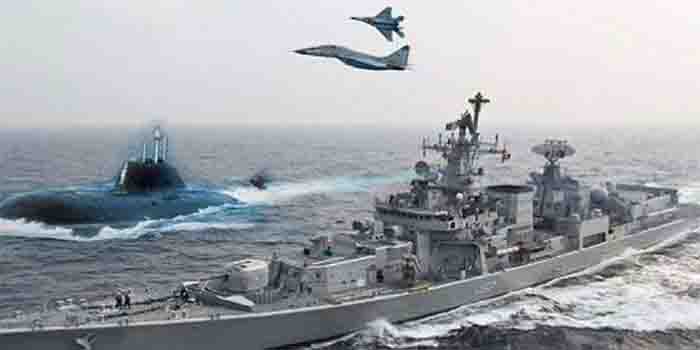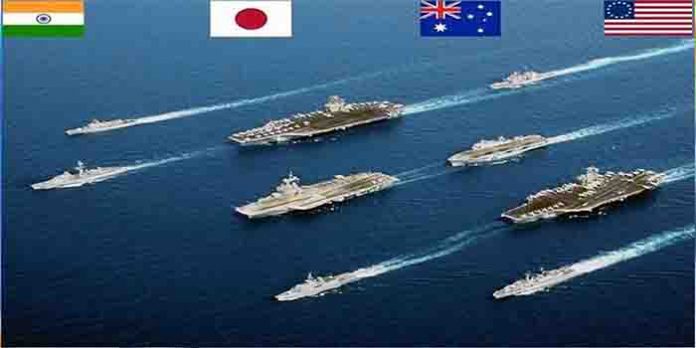India, the US, Japan and Australia began their largest joint naval exercises in over a decade on Tuesday. The exercise will demonstrate high-levels of synergy and coordination between the navies of these four countries. A weapon-firing sequence was performed on Day 3 of the four-nation naval war games “Malabar 2020” in the Bay of Bengal, off Visakhapatnam. The weapon-firing sequence from the first phase of the naval exercises today shows shells being fired from an Indian and an Australian frigate. The first of the two-phased drill is from November 3 to November 6. The first phase of the Malabar would see complex and advanced naval exercises comprising surface, anti-submarine and anti-air warfare operations. The first phase will witness the participation of Indian Navy units with USN Ship USS John S McCain (a guided-missile destroyer), RAN Ship HMAS Ballarat (long-range frigate) with integral MH-60 helicopter, and JMSDF Ship JS Onami (destroyer) with an integral SH-60 helicopter. INS Ranvijay, multi-role frigate INS Shivalik, off-shore patrol vessel INS Sukanya, fleet tanker INS Shakti and submarine INS Sindhuraj will be deployed by the Indian side which is being led by Rear Admiral Sanjay Vatsayan (Flag Officer Commanding, Eastern Fleet) during this phase.

Cross-deck flying and weapon firing operations are also a part of this quadrilateral exercise. Malabar’s 24th edition is being conducted as a “non-contact, at sea only” affair in the view of the coronavirus (Covid-19) disease. This is the first time that all four partners of the Quadrilateral alliance or Quad – India, the United States, Australia and Japan – are participating together in a naval exercise of this scale. The first phase, which ends today, focuses on complex and advanced naval exercises including surface, anti-submarine and anti-air warfare operations, cross deck flying, seamanship evolutions and weapon-firing exercises. Showcasing the countries’ resolve to support an open Indo-Pacific region, the exercise focuses on increasing the four countries’ cooperation in the area that has been witnessing increasing Chinese military aggression. The Malabar, which originally started in 1992 as a bilateral exercise between India and the United States, welcomed Japan as a permanent member in 2015. On October 20 this year, it was announced that Australia too will again participate in the exercise. Australia last participated in the Malabar exercise in 2007. The second phase of the exercise will be conducted in mid-November in the Arabian sea.






















